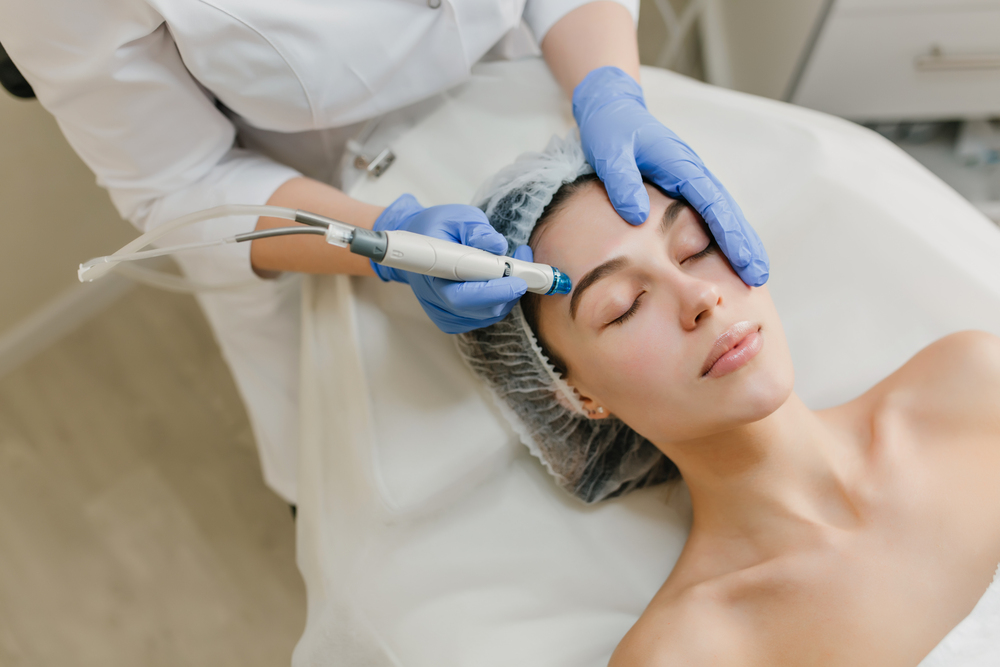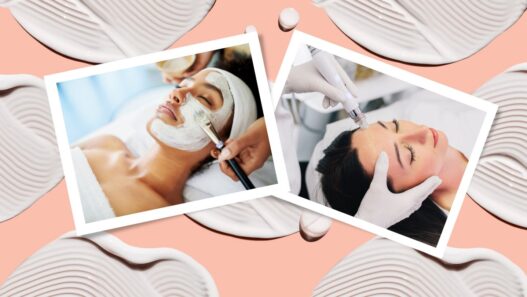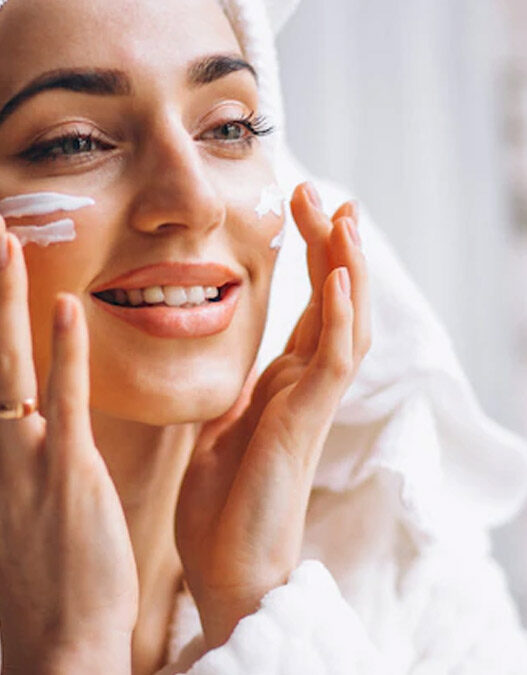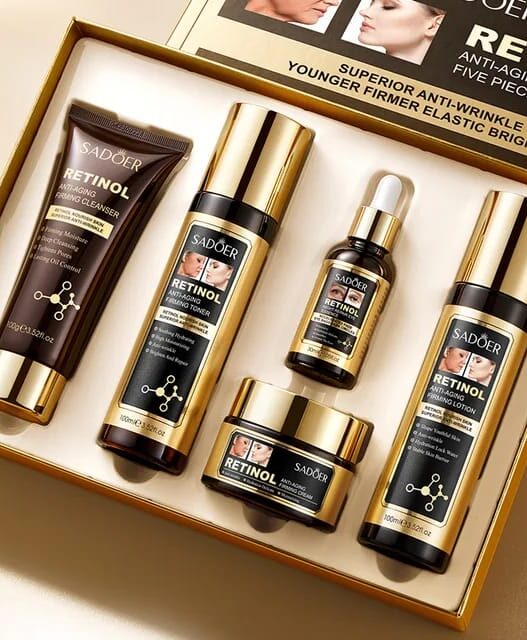There are numerous types of facials available. Advanced therapies like HydraFacials, chemical peels, microdermabrasion, and LED therapy use particular techniques to enhance skin texture and look, while basic facials often clean and hydrate the skin. Every kind is meant to address a different issue. You may choose the one that best suits your skin.
Facials and Skin Treatment
Facials can support the healing of disorders under dermatologist care. Optimal skin health depends on seeing a dermatologist as there are treatments only licensed doctors can offer to treat acne, psoriasis, rosacea, and other skin conditions.
The fact that facials offer so many alternatives is one of their best aspects.

Remember that skin-care establishments could call their facials by several names. You may call the place and inquire if they have the kind of facial you are interested in if you are intrigued by something specific.
1. Traditional Facial
A classic facial is one of the most common treatments you’ll find at a spa or salon. It usually includes cleansing, gentle exfoliation to remove dead skin cells, and moisturizing to keep the skin hydrated. In some cases, it may also involve extractions, where clogged pores are carefully cleaned.
This type of facial is often called a deep cleaning facial, glow facial, or hydrating facial, depending on the products and techniques used. It can usually be customized for different skin types, making it a safe choice for most people.
The results may not last forever, but a classic facial often leaves your skin looking fresher, smoother, and more radiant. If you have sensitive skin, it’s best to check with the spa about the products they use and choose options that are gentle and suitable for you.
2. Facial using LED Light Therapy
An LED facial uses different colors of light to improve the skin. Each light works at different depths to create specific effects. For example, red light can help boost collagen, which may reduce fine lines and wrinkles. Blue light is often used to target acne by reducing bacteria and calming inflammation.
The treatment is painless, and a single session usually lasts about 20 minutes. Many people can benefit from LED facials, especially those dealing with acne, redness, or early signs of aging.
It’s important to know that results don’t appear right away. Most people need several weeks of treatments to see changes like smoother skin or less inflammation. To keep results, regular sessions are often recommended.
At-home LED masks are also available. While not as powerful as professional devices, they can still provide a gentle boost and help maintain progress between spa visits.
3. Microneedling
Almost like a face workout, microneedling can be seen as damage to muscular tissue that your body regenerates stronger. Using a device with many little needles to induce regulated collagen damage, microneedling stimulates collagen synthesis. Collagen offers skin’s structural support.
Microneedling is effective at reducing fine lines or acne scars. Hyperpigmentation is linked to acne scars in people. Dark skin is also thought to be a safe and effective way to treat it.
4. IPL Picture Facial
Another light-based tool used to address sun damage-related discoloration is intense pulsed light (IPL).
The light penetrates the upper layer of skin to eliminate cells producing broken blood vessels or contributing to discoloration. Over time, these cells or blood vessels decompose and are reabsorbed into your body.
It helps sun spots, freckles, age spots, and broken blood vessels that cause rosacea and overall redness. Should you If you have melasma a face skin ailment in which tan, brown, or bluish gray areas and specks appear usually during pregnancy.
You should stay away from IPL as it can exacerbate discoloration. For best outcomes, you will need to undergo a number of IPL sessions.
5. Hydrafacial
A particular, patented therapy called a hydrafacial has three phases. washing and exfoliation, extraction suction of pore waste. The hydration with lotions.
Although hydrafacial is safe for most individuals, it may be too strong if you have a rash, sunburn, or mild to severe acne or rosacea on your skin; therefore, discuss with your dermatologist alternatives more appropriate for you. Consult your ob-gyn first if you are pregnant as it has salicylic acid.
6. Chemical Peel
Chemical peels include exfoliating acids such as glycolic, salicylic, mandelic, or lactic acid applied to the skin.
Applying glycolic acid solution, a form of alpha hydroxy acid, on the face for a few minutes to eliminate dead skin cells is what this entails. The result is skin that appears brighter and with a better texture.
The concentration of the acid and the amount of time it is allowed on the skin will determine the several advantages of chemical peels. This implies they may be customized for novices or someone wanting a more intensive therapy.
That’s fantastic news, especially. If you’re new to chemical peels. Tell your dermatologist or esthetician if this is your first time doing so. They can talk with you about the right intensity. They are also for your goals.
Another thing to think about is that, not everyone’s skin peels after a chemical peel, yours may. Therefore, before purchasing one, you should definitely talk about what to expect.
7. Microcurrent facial or face tightening or shaping
Although there is no set definition for a firming or sculpting facial, it frequently uses low-level laser technology and facial massage. Results might include firmer, more sculpted skin, but for longer-lasting results they could need maintenance treatments.
Given that the group encompasses a great variety of therapies, first consulting with the practitioner will help one to grasp the instruments and treatments available, used and whether each is appropriate for your skin type and issues.

8. Microdermabrasion
Microdermabrasion is a type of physical exfoliation meant to eliminate dead skin cells. This method involves removing the outermost layer of skin (the epidermis) by use of a device that pushes tiny crystals against the skin.
But keep in mind that microdermabrasion might be aggravating and, in certain circumstances, cause scarring. Therefore, not all skin types are suited for it.
Some people may like the immediate glow they notice. Still, it’s not suitable for everyone. It should be avoided by those with sensitive skin. she adds
9. Dermaplaning
Thinking of dermaplaning as shaving your skin would help you. It softly sloughs off dead skin cells and eliminates ‘peach fuzz’ to expose a more even, brighter complexion.
If you want lighter skin, she says this facial is for you. In such a case, “oilplaning,” a procedure that involves scraping the skin while applying oil.
Conclusion
Facials are not merely a cosmetic procedure. They help to maintain clean, vibrant, and well-kept skin. A facial is a professional skin-care procedure that could involve cleaning, exfoliating, massage, and mask or cream application.
While others address particular skin issues like acne, dryness, or aging signs, these types of facials facials center on relaxation and skin healing.

















